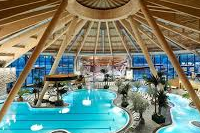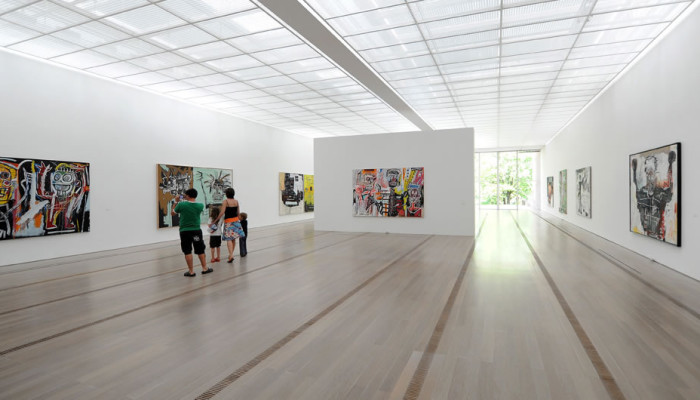Project Info
Project Description
The Swiss have always maintained and nurtured their own local customs, and because of this, Switzerland is a country with an enormous wealth of cultural activity and living Tradition.
«La suisse n’existe pas» (Switzerland does not exist) – in this one key sentence Switzerland introduced itself at the World Exposition in Seville in 1992. This was because it is not uniformity, but variety in a small space that defines Switzerland. This can be explained culturally and geographically: In little Switzerland, four national languages are spoken in addition to numerous dialects. There is also a distinction between the culture in the mountains and the culture on the central plateau, while life in a mountain valley is different from that in the big city. So, although there are numerous regional traditions there are relatively few national customs. However, over time and with the increase in tourism, there are some local customs that have achieved national fame.
On the Alp
Alpine farming has a long history. It is believed that the pastures above the tree line were being farmed as far back as 4,000 BC.
The production of cheese in the summer enabled people to preserve milk and stockpile it for the long winter months. The practice of Alpine farming gave birth to various customs such as the festive processions up into the Alps and down from the mountains, the call to prayer, the Älplerchilbi carnival and the Chästteilet cheese sharing – traditions that have been carefully maintained to this day. From a distance, Alpine life looks romantic: cow bells, a blade of grass in the mouth, unlimited nature, sunsets over the mountain tops and candles on a wooden table. In addition, this lifestyle involves hard physical work and simplicity of life – which, in recent times, has attracted especially urban dwellers from both home and abroad.
Customs and sports
For a long time, Swiss sports customs were eclipsed by international types of sport – but recently, they have come back into their own.
While regional and local sporting traditions have often been neglected, there are some sports that have enjoyed increasing popularity. Major events such as the Swiss Wrestling and Alpine Festival ESAF are increasing in popularity; in 2010, the festival reached a new record with 250,000 visitors and became the largest Schwingen festival ever held. It is worth noting that no additional police were needed for the maintenance of order, and the authority of the public address announcer was sufficient. At these multi-day festive occasions, athletic wrestlers, sturdy boulder throwers and strong Hornussen players gave of their best – all to the accompaniment of yodel choirs and accordion orchestras.
Arts and crafts
For half a millennium the Swiss watch industry has enjoyed a good reputation. There were difficult moments – but time has never stood still
Today, 95% of Swiss watches are destined for export and the watch industry is a key export industry. The textile crafts industry also has an eventful past. A few areas, thanks to advanced technology, have enjoyed worldwide attention in haute couture, and the once popular textile handicrafts have found a niche for themselves. Many sectors of the crafts industry, such as wood sculpture, furniture painting and farmers’ ceramics are closely connected with the history of Swiss Tourism. As ambassadors, they influenced the image that countless tourists to the Alps had of Switzerland in the 19th and 20th centuries.
Typical food and wine
The food in Switzerland is a potpourri of influences from various countries. It combines the cuisines of its neighbours and creates from them a local cuisine with local ingredients.
There are a few dishes and specialities, such as fondue, Älplermagronen and chocolate, that are typical of Switzerland, but there is no real Swiss cuisine to speak of. There is a cuisine with Bernese Platter and Bernese Rösti. A cuisine with Vaud sausage and leeks. A cuisine with St Gallen Ribelmais and whitefish from Lake Constance. The Valais is famous for its raclette, Graubünden for its capuns, Zurich for its Geschnetzeltes, Lucerne for its Chügelipastete and Ticino for its Mortadella und Luganighe. You will find sausage everywhere – Switzerland is home to almost 350 different varieties. And that is – in terms of land area – clearly a world record. And incidentally, while not quite the world leader, the Swiss wines are well on the way there. Besides the well-known classics, Switzerland provides for unique tasting pleasure with its new types of wine and development of indigenous varieties.
Music
No matter whether there is dancing taking place or not, Swiss folk music is mainly dance music.
The most commonly heard musical instruments include the “Schwyzerörgeli” (accordion), the violin, bass violin, clarinet and, in certain regions, the dulcimer or Trümpi (Jew’s harp). Alpine folk music developed with the unwritten transfer of skills and compositions over generations, decades and even centuries. The oldest known Kuhreihen (rounds) are from Appenzell and were recorded in 1545. The Alphorn, so typically Swiss, was originally a musical and signaling instrument used by the herdsmen and the many yodeling choirs that have been formed since the 19th century. In general, Switzerland has an extensive amateur music scene, and in virtually every village there is at least a choir or a brass band



